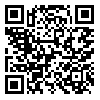







































BibTeX | RIS | EndNote | Medlars | ProCite | Reference Manager | RefWorks
Send citation to:
URL: http://psychologicalscience.ir/article-1-2320-en.html
Background: Separation anxiety disorder is one of the most common psychological disorders in childhood. Parenting styles and parental anxiety are among the important risk factors that have been identified for the occurrence of separation anxiety disorder. A review of the research background shows that despite conducting various studies in Iran on the effectiveness of art therapy, especially painting, on reducing children's separation anxiety, There is a research gap regarding the effect of the combination of painting and parent-child interaction on children's separation anxiety.
Aims: The present study was conducted with the aim of investigating the efficacy of interactive painting methods based on parent-child relationship on the symptoms of separation anxiety disorder in 6-8 year old children.
Methods: The current research design was a semi-experimental pre-test-post-test type with a control group and a three-month follow-up. The statistical population of this research included all 6-8 year old children with separation anxiety disorder in Isfahan city in the academic year of 2021-2022, who were enrolled in pre-primary centers and elementary School in Isfahan city. In order to select a statistical sample, in the first step, the Separation Anxiety Assessment Scale (Parent Version) was administered on 100 parents of children aged 6 to 8 years, and children with separation anxiety disorder were identified, And then 16 parents of children with separation anxiety disorder and their children were identified and randomly assigned to two experimental (8 people) and control (8 people) groups, the educational-therapeutic protocol was held in 13 sessions of 45 minutes (one session each week) for the members of the experimental group. The data collection tool in this study was the parents' version of Separation Anxiety Assessment Scale (Hahn et al., 2003). Also, to analyze the data in the present study, the method of analysis of variance with repeated measurements and SPSS-23 software was used.
Results: The findings of the present study showed that interactive painting methods based on parent-child relationship reduce the symptoms of separation anxiety disorder and its components (fear of being alone, fear of abandonment, fear of physical illness and worry about calamitous events) It has an effective and significant effect on children aged 6-8 years (P<0.05) and the effect of this training has continued in the follow-up phase.
Conclusion: Considering the confirmation of the efficacy of interactive drawing methods based on parent-child relationship on reducing separation anxiety disorder in 6-8 year old children in the present study, it is suggested, School counselors and specialized child counseling centers should use this educational-therapeutic method to reduce the symptoms of separation anxiety disorder in children. Also, in terms of the importance of parent-child interaction, the aforementioned educational-therapeutic program can be used to strengthen the parent-child relationship in the family.
Received: 2024/01/13 | Accepted: 2024/03/15 | Published: 2024/07/19
| Rights and permissions | |
 |
This work is licensed under the Creative Commons Attribution-NonCommercial-NoDerivatives 4.0 International (CC BY-NC-ND 4.0) License. |
This work is licensed under the Creative Commons Attribution-NonCommercial-NoDerivatives 4.0 International (CC BY-NC-ND 4.0)





